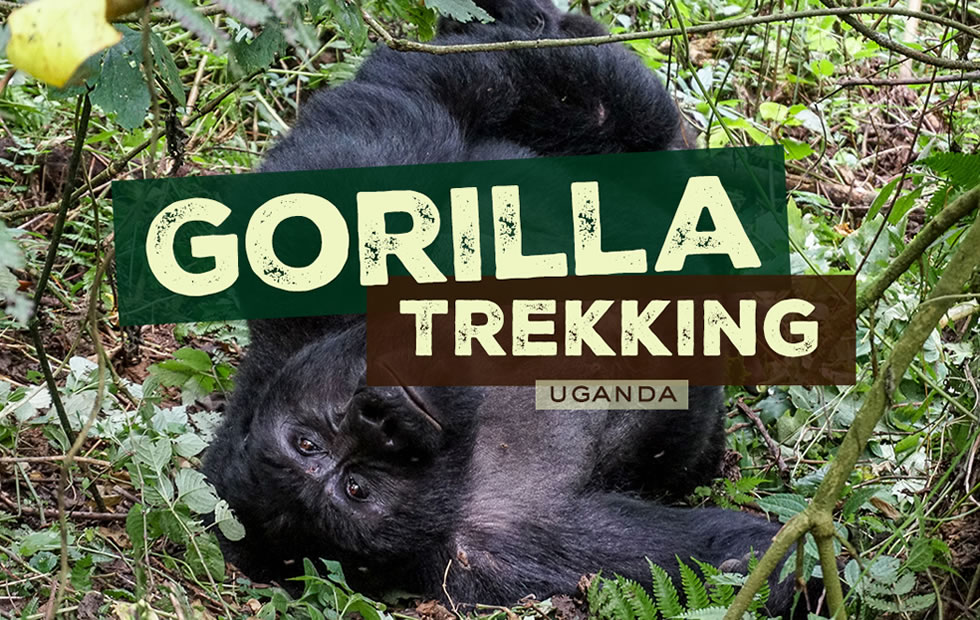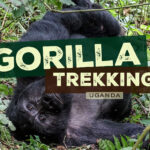“On my first gorilla trekking in Africa in 2008, I felt as if I had been invited to a reunion of distant, hairy relatives. When I first saw the gorillas I took photos for a while, but then put my camera away so I could just watch. I stood mere feet from these powerful animals and they calmly let me be a part of their world. No glass, no bars, no rumbling safari car engine, no squinting through binoculars. Just humans and gorillas together in the forest”.
Those are some of the reviews of gorilla trekking, an amazing adventure experience that can only be got from Uganda, Rwanda or Congo. Though gorilla trekking is such a wonderful experience, a successful adventure in search of these giants requires proper planning. Today, it is common for most travelers going on safari in East Africa adding on a few days to see the mountain gorillas in Rwanda, Uganda, or the Democratic Republic of Congo. Here are the top travel tips that you should know about gorilla trekking in East Africa;
Gorilla trekking requires more active participation than traditional safaris, so it’s important to plan ahead so you are prepared for the challenge. Once you book a tour here are some important points to keep in mind:
1. Dress for success
I have seen gorilla trackers tourists dressed in all kinds of outfits, from young women in skinny jeans and tennis shoes to well-heeled adventurers decked out in North Face gear that would rival anything you’d see at Mt. Everest base camp. Personally, I think you need to be prepared for muddy trails and changeable weather, but it’s not necessary to spend a fortune to be prepared.
Here’s what I recommend. On top, wear layers. Start with a shirt made of a synthetic material that dries quickly. I usually spend most of the trek up the mountain in a t-shirt as it can get quite warm and muggy in the forest. I usually add a fleece layer when the group stops and I start cooling down. I can’t emphasize enough how important it is to have a third rain layer. Rainstorms can happen at any time in the forest, and it’s no fun, not to mention dangerous, to be cold and wet for hours. You can bring a waterproof rain jacket, but a cheap poncho will also work.
On the bottom I wear long pants, also made of a synthetic material. Between the potential for cold weather and the stinging nettle plants of the forest, wearing shorts is an invitation for misery. Some trekkers also bring waterproof pants to wear on top of regular pants, but I usually don’t unless it’s the peak of the rainy season in April and May.
2. Wear proper footwear
Boots that fit above the ankle are a must. You’ll probably walk through ankle-deep mud at certain points, and sometimes even knee-deep mud that threatens to suck the boots right off your feet. Because of this, you should wear gators over your boots that go up to the knee. When I trek, I go like the locals and wear knee-high rubber willies with treads on the bottom. I’m guaranteed to stay dry up to knees and the boots can be quickly cleaned and dried out for the next day. I wear Smart Wool socks underneath.
3. Pack enough food and water
There’s no place to buy food and water once you get to the national parks so make sure you have at least a liter of water and some snacks to pack with you. Some treks last well into the afternoon, so I try to bring some energy bars and fruit to keep me going. Volcanoes Safaris’ lodges provide packed lunches for trekkers but it’s always nice to have a few favorite snacks from home in case you’re a picky eater.
4. Speak up about your trekking preferences
When you arrive at park headquarters on the morning of your trek, the national park guides will assign you to a gorilla group. Technically, it’s not possible to book permits for a specific gorilla group. However, it is important to let your tour company representative know your fitness level, so they can work with the guides to assign you to group that will be within your ability to reach. Some groups are known for ranging far afield while others stay closer to the park boundaries or even go outside of the park. However, all groups move in search of food so there’s no guarantee that one group will be easier to reach than another. On certain days when fewer tourists are trekking than usual, you may be able to request specific groups. Closer groups with new babies tend to be the most popular. It’s hard to pick which groups are the “best” because they are all different and group size and composition changes from one year to the next. Every gorilla trek I’ve been on has been unique and revealed a new facet of mountain gorilla behavior.
5. Make sure your camera is forest ready
I’ll offer more specific photography tips in a later blog, but here are the basics: Flash photography is not allowed as it disturbs the gorillas so make sure you have your camera manual with you so you know how to disable the automatic flash and automatic focus light functions. Photographs of gorillas in the low forest light often turn out dark due to underexposure. To avoid this, I tend to shoot at ISO 1250 or higher when in the forest. These days, newer models of both point-and-shoot and DSLR camera can handle relatively high ISOs without adding too much noise. No matter what kind of camera you bring, make sure you keep it in a waterproof bag (a large Ziploc will do) to avoid getting the camera wet. I’ve seen way too many nice cameras destroyed by African rainstorms.
The price for a Rwandan mountain gorilla trekking permit is $750, $ 500 dollars for Uganda and $ 400 dollars for the Democratic republic of Congo, so book your gorilla safari with Go Gorilla Trekking, adventure travel specialists for an agent to handle the paperwork for you.


